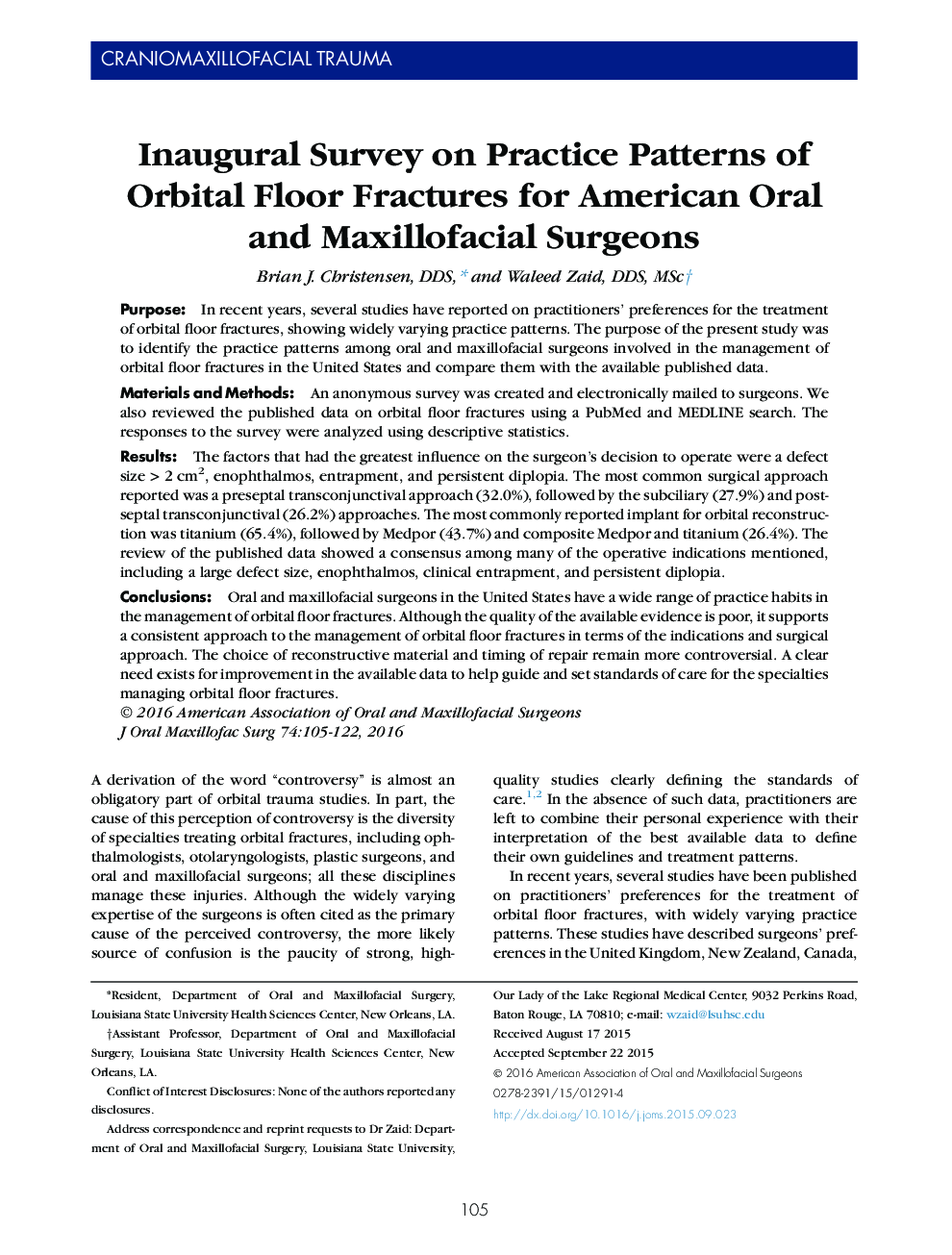| Article ID | Journal | Published Year | Pages | File Type |
|---|---|---|---|---|
| 3152175 | Journal of Oral and Maxillofacial Surgery | 2016 | 18 Pages |
PurposeIn recent years, several studies have reported on practitioners' preferences for the treatment of orbital floor fractures, showing widely varying practice patterns. The purpose of the present study was to identify the practice patterns among oral and maxillofacial surgeons involved in the management of orbital floor fractures in the United States and compare them with the available published data.Materials and MethodsAn anonymous survey was created and electronically mailed to surgeons. We also reviewed the published data on orbital floor fractures using a PubMed and MEDLINE search. The responses to the survey were analyzed using descriptive statistics.ResultsThe factors that had the greatest influence on the surgeon's decision to operate were a defect size > 2 cm2, enophthalmos, entrapment, and persistent diplopia. The most common surgical approach reported was a preseptal transconjunctival approach (32.0%), followed by the subciliary (27.9%) and postseptal transconjunctival (26.2%) approaches. The most commonly reported implant for orbital reconstruction was titanium (65.4%), followed by Medpor (43.7%) and composite Medpor and titanium (26.4%). The review of the published data showed a consensus among many of the operative indications mentioned, including a large defect size, enophthalmos, clinical entrapment, and persistent diplopia.ConclusionsOral and maxillofacial surgeons in the United States have a wide range of practice habits in the management of orbital floor fractures. Although the quality of the available evidence is poor, it supports a consistent approach to the management of orbital floor fractures in terms of the indications and surgical approach. The choice of reconstructive material and timing of repair remain more controversial. A clear need exists for improvement in the available data to help guide and set standards of care for the specialties managing orbital floor fractures.
